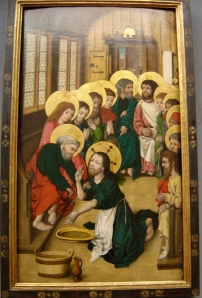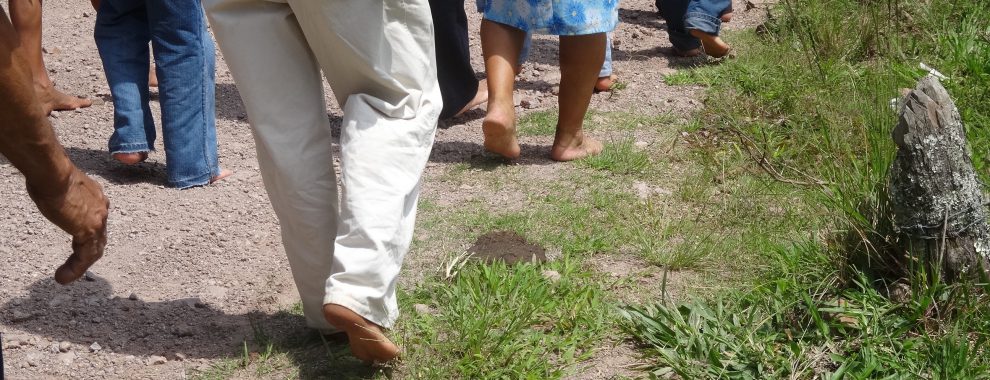 Almost immediately after Cardinal Jorge Bergoglio was announced as Pope Francis, photos began appearing of a priest kneeling and washing the feet – of women in a maternity hospital, of young people in what may have been a drug rehabilitation center. And today Pope Francis will visit a center for rehabilitation of young offenders and wash their feet.
Almost immediately after Cardinal Jorge Bergoglio was announced as Pope Francis, photos began appearing of a priest kneeling and washing the feet – of women in a maternity hospital, of young people in what may have been a drug rehabilitation center. And today Pope Francis will visit a center for rehabilitation of young offenders and wash their feet.
Then, on the day of his inauguration, Pope Francis stopped the pope-mobile to descend to bless and kiss a seriously disabled man held in the arms of two young people.
I remembered a talk Jean Vanier gave in 1998, which you can read here. It deserves a prayerful reading today (and every day.)
“Jesus is always surprising us,” said Jean Vanier. “He doesn’t like it when we fall into little habits. He shakes us up.”
A few years ago I was leading the Holy Thursday celebration in the town of Vera Cruz (which mans “True Cross”). The people were reluctant to come forth to have their feet washed. Finally we got twelve boys.
These were not manicured feet, washed beforehand for a church ceremony. They were kids’ feet – dirty. So too much have been the feet of Jesus’ apostles.
But what Jean Vanier emphasizes and what I think is critical about the washing of the feet, especially among the poor, is that this is revolutionary because it shakes up the social hierarchy and calls us to descent, to take the downward path.
As Vanier notes, Peter doesn’t want Jesus to wash his feet because that’s not the way the hierarchy works. But Jesus has another message. In Jean Vanier’s words,
“If I cannot show that I want to be your servant, then you are no longer my friend. Because you must understand that message turns everything upside down.” Those who are at the bottom come up to the top.
In our world, those who are impoverished, those who suffer disabilities, those who are marginalized because they are young, or imprisoned, or addicted receive a message that they are worth little or nothing.
But the message of Jesus, washing feet, is to give all a sense that they are loved, that they have an inestimable worth.
Vanier spoke of a blind and deaf young man in one L’Arche community who only wanted to die. “We want him to move from a feeling of being no good to a sense of his value and his worth.”
How did Vanier and the community do this?
They bathed him with love, with tenderness.
And so Vanier suggested that, in washing the feet, Jesus is telling us a lesson on how to be children of God, sisters and brothers in Christ, how to be a Church of the Poor.
“[Jesus] want is to discover the Church as Body where each one is important.”
“He is reminding us that henceforth we must look downward.”
“…we must be, all of us together, servants of one another – serving each other, empowering each other….we are there to serve each other, to love each other.”
Today I’m going out to the village of Plan Grande to distribute Communion during their Celebration of the Word. Two village leaders will lead the Celebration of the Word and the Washing of the Feet. I asked to also be able to wash feet.
It’s the least I can do – washing feet and then distributing Him who washed feet.
That’s what our faith is about.
If I, your Lord and Teacher, have washed your feet,
you also ought to wash one another’s feet.
For I have set you an example,
that you should also do as I have done.
John 13: 14-15












